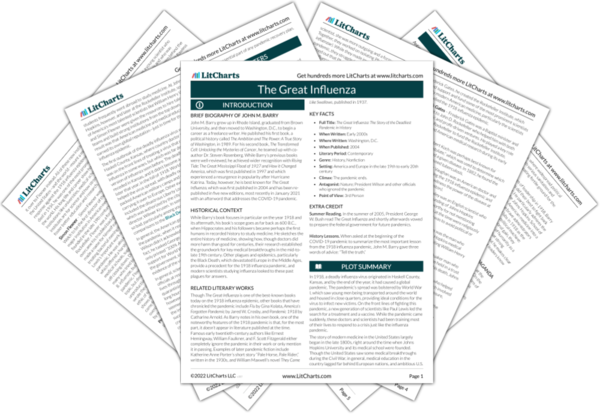The press symbolizes the truth and particularly how, in the years around World War I, the truth was often distorted by government interference. The strange thing about the so-called “Spanish influenza” that became a global pandemic in 1918 was that it didn’t originate in Spain or even hit the country with particular ferocity. It became associated with Spain simply because Spain was neutral in World War I and therefore its press had less incentive to cover up bad news and print propaganda, leading to more coverage of the pandemic. In the United States in particular, President Woodrow Wilson and his appointee George Creel kept a tight leash on newspapers, restricting mentions of the pandemic even when people could see clear evidence of the disease around them. The result was that the public began to distrust the government, and this made it even harder to implement successful strategies to combat the pandemic. By showing the dangers of a censored press and of propaganda, author John M. Barry also hopes to highlight the benefits of a free press and highlight how telling the truth can actually be the most effective tactic for government officials, especially during a major public health crisis.
The Press Quotes in The Great Influenza
Wilson had demanded that “the spirit of ruthless brutality. . . enter into the very fibre of national life.” To carry out that charge, Creel had wanted to create “one white-hot mass,” a mass driven by “deathless determination.” He was doing so. This was truly total war, and that totality truly included the medical profession.
As terrifying as the disease was, the press made it more so. They terrified by making little of it, for what officials and the press said bore no relationship to what people saw and touched and smelled and endured. People could not trust what they read. Uncertainty follows distrust, fear follows uncertainty, and, under conditions such as these, terror follows fear.
So the final lesson of 1918, a simple one yet most difficult to execute, is that those who occupy positions of authority must retain the public’s trust. The way to do that is to distort nothing, to put the best face on nothing, to try to manipulate no one.












